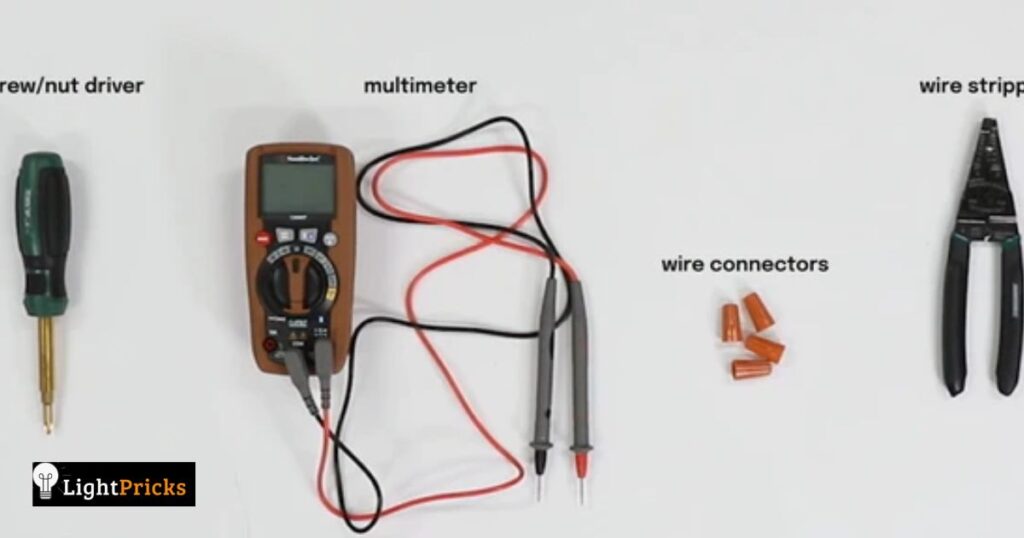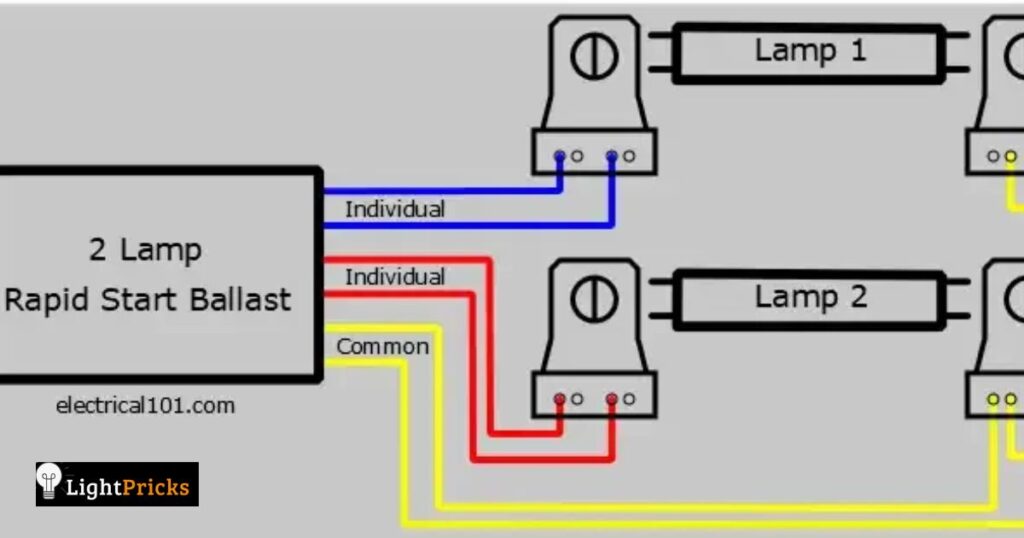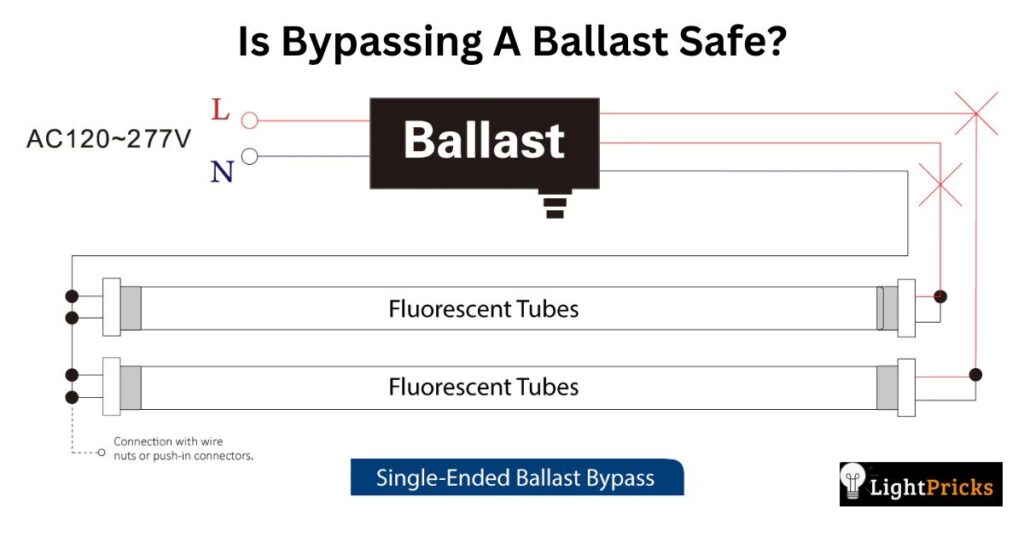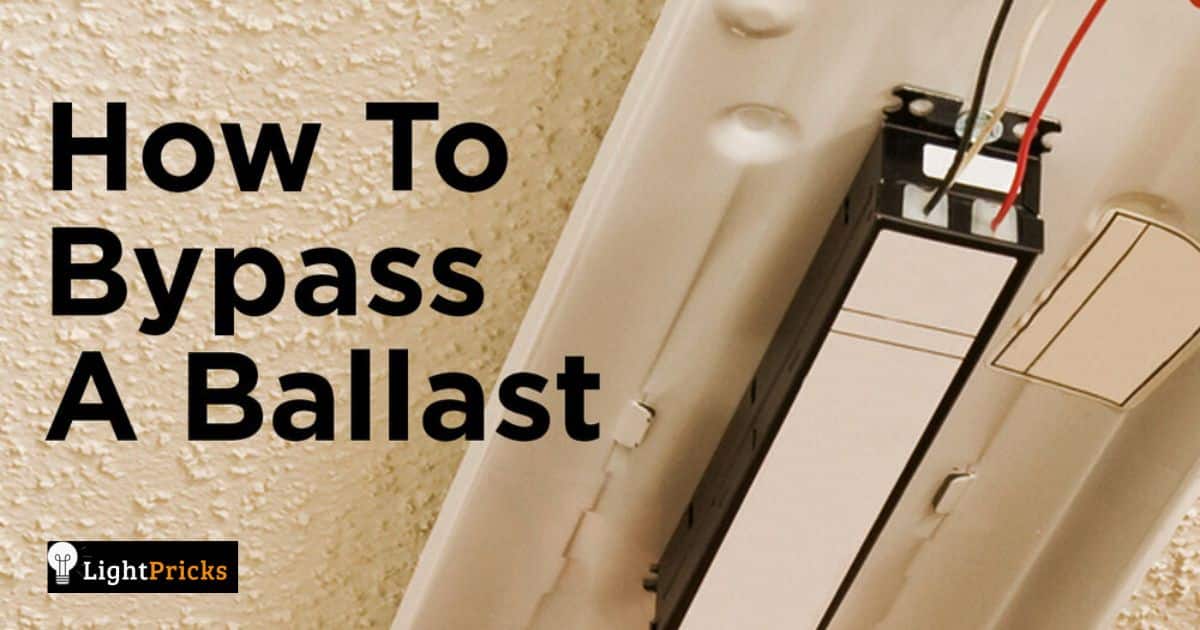Ballasts are used to regulate voltage and current in fluorescent light fixtures. However, ballasts are not needed for LED lights which use low voltage direct current. Bypassing the ballast allows LED light bulbs to work directly but requires turning off the power and carefully handling wires.
You may have replaced old fluorescent lights with more efficient LED lights, but found they won’t turn on. There is likely a ballast still in the fixture preventing the LEDs from working. Ballasts are designed for fluorescent tubes, not LEDs which use low voltage direct current. This article will explain how to identify if a ballast needs bypassing and provide steps to bypass it safely. Bypassing the ballast is easy with basic tools if done carefully after switching off the power. You’ll then be able to use your new LED lights efficiently.
Materials And Tools Needed To Bypass A Ballast For LED Lights:

To bypass the ballast, you will need a few basic tools and materials:
- Wire cutters or electrician’s pliers – to cut the wires
- Wire strippers – to strip the plastic coating off the cut wire ends
- Electrical tape – to secure the connections once made
- Small flat-head screwdriver – to loosen screws securing the ballast and wires
- Replacement LED light bulb
- Optional: Test light or multimeter – to test the wires before connecting
Identifying If The Ballast Needs Bypassing:
The first step is to take a look inside your light fixture and identify if there is a fluorescent ballast present. Ballasts typically look like a small rectangular box, usually off-white or beige in color, and are secured directly to the fixture frame near the base. They will have wire leads coming out of them attaching to the sockets.
If you notice a ballast is present and your new LED bulb does not light up when you flip the switch, then the ballast likely needs to be bypassed so the LED bulb can receive power directly without any regulation. Ballasts are designed specifically for fluorescent tubes and will prevent LED bulbs from lighting.
Bypassing The Ballast:
Now we will go through the steps to safely bypass the ballast:
- Turn off the power to the light fixture at the circuit breaker. Do not proceed with any wires live. It is essential for safety to avoid the risk of electric shock.
- Remove the light cover/glass and fluorescent tubes if still present. This will provide better access to the ballast and wires.
- Use your screwdriver to loosen the screws securing the ballast wires to the ballast terminals. There may be a black wire, white wire and bare copper wire.
- Clip the black wire on one side of the ballast and strip 1/2 inch of insulation from the cut end using your wire strippers. Do the same to the other black wire leading to the socket.
- Twist the two black wires together tight and wrap them securely with electrical tape. Be sure no bare wire is exposed.
- Repeat this process with the white wires and bare copper grounding wires. Twist them together and tape the connections.
- Turn the power back on at the circuit breaker and install your new LED bulb. It should now light up without the ballast interfering!
- Replace the fixture cover and test that the bulb still works with the cover on.
That completes the ballast bypass process. Be sure to turn the power off again before finishing up reassembly just to be safe. Now your new LED bulb can operate efficiently without the unnecessary ballast. Always turn the power off when working with electrical wiring. With some care, anyone can bypass a ballast and enjoy the benefits of LED lighting.
Tips for a Successful Bypass:

Here are a few extra tips for getting a good ballast bypass:
- Make sure to twist the wire connections tightly together before taping. This ensures a good electrical connection.
- Use black electrical tape instead of other colors so any exposed wire is easier to spot for safety.
- Double check your work before turning the power back on. Give all wire connections a gentle pull to be sure they are securely fastened.
- Consider taking a picture of the wiring before disconnecting for reference if needed during reassembly.
- For an additional layer of safety, you can use a voltage sensor to test each wire is dead before handling after turning off the breaker.
- Ballasts that are bulky or difficult to access can sometimes be left in place without bypassing if the LED bulb still works. But bypassing removes an unnecessary component.
- Call a licensed electrician if ever unsure or uncomfortable working with electrical wiring. Safety should always be the top priority.
Troubleshooting Tips:
Even after bypassing, if the LED bulb still does not light up, here are some things to check:
- Make sure the bulb type (especially color temperature) matches what the new fixture is designed for.
- Check that all connections are tight and the bulb base is securely in contact with the socket terminals. Reflow soldering or reconnect if loose.
- In rare cases, some ballasts can still interfere even when bypassed due to residual current or magnetics. Try a different fixture if problems persist.
- Confirm the power supply wire connections are also securely fastened to the correct circuit line and neutral ports.
With some patience, the most likely issues can be diagnosed and fixed. As long as the power is turned off when working on lights, bypassing a ballast to use LEDs can be done safely at home. Let me know if any part of the process remains unclear.
Is Bypassing A Ballast Safe?

Bypassing a ballast can be safe if done carefully. You must always remember to turn off the power at the switch before touching any wires. Electricity can hurt you if not careful. When bypassing, don’t rush and focus on what you are doing. Only touch one wire at a time. Make sure wire connections are tight so electricity stays in the wiring.
Use tape so no bare wires can be touched. Always push in light bulbs firmly so power goes to the right place. Doing it step-by-step and slow is best. Asking a grown up to check your work is also good. As long as switch is off and you are slow, bypassing a ballast should not cause any problems.
FAQ’s
Can you replace fluorescent tubes with LED without removing ballast?
You can try replacing tubes with LED tubes but the ballast may interfere and prevent them from lighting properly. It is better to bypass the ballast for best results when converting to LEDs.
Can you use LED tubes without ballast?
LED tubes can work without a ballast as they don’t need the voltage regulation. Removing the ballast allows the LED tubes to receive power directly and perform as intended without issues.
Do all LED lights need a ballast?
No, LED lights do not need a ballast as they run on low voltage direct current instead of the higher voltage used by fluorescent tubes. Ballasts are unnecessary for LEDs.
Is it worth converting fluorescent to LED?
Yes, switching to LED lights is worth it for most homes. LEDs use less energy, last much longer than other bulbs, and can save money on power bills in the long term despite higher upfront costs.
Final Thoughts
How To Bypass A Ballast For LED Lights? We have now covered what a ballast is, how to identify if one needs bypassing to use LED lights, provided step-by-step instructions for bypassing the ballast safely with common tools, given helpful tips, and listed some troubleshooting advice.
Bypassing a ballast allow people to still use more efficient LED bulbs in fixtures originally designed for fluorescent tubes. With the proper preparation and care when handling electrical connections, this small project can be accomplished without much effort. LED lights save money in the long run through lower energy consumption too. I hope this guide helps you upgrade lighting safely and easily in your home.













